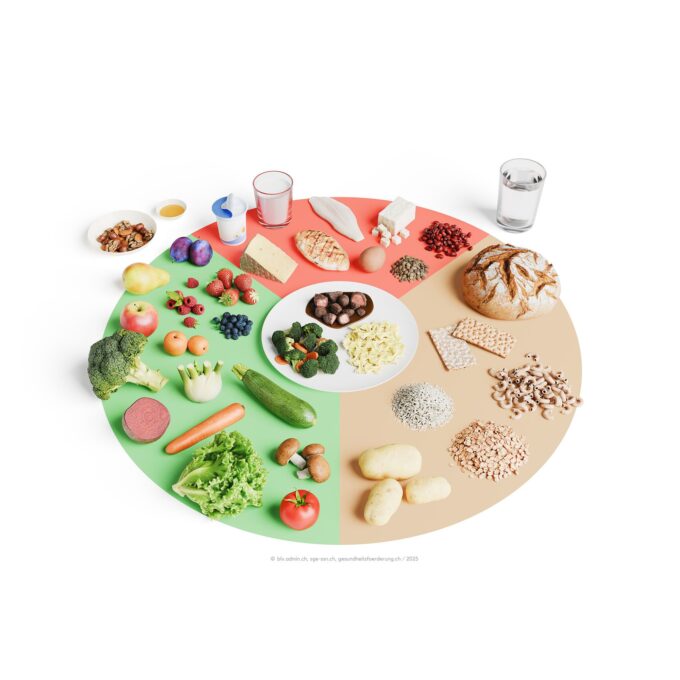More and more people are stressed at work
The proportion of people who say they feel stressed at work has increased from 18% to 23% within ten years (2012-2022). Of all working conditions that pose physical or psychosocial risks to health, stress has increased the most.

More than half (53%) of stressed people also feel emotionally exhausted at work and therefore have a higher risk of burnout. These are some of the findings from the Federal Statistical Office's (FSO) publication on work and health.
Working conditions have a significant influence on health. The results of the Swiss Health Survey (SGB) can be used to analyze the development of ten physical risks and nine psychosocial risk types between 2012 and 2022 (details in the "Data source" box).
Stress often occurs in the health and social care sector
In 2022, 25% of working women and 21% of working men stated that they usually or always experience stress at work. These proportions have increased compared to 2012, particularly among women: Back then, 17% of women and 18% of men felt stressed. Stress occurs most frequently in the health and social services sector (29%). One in four women is employed in this sector.
Burnout risk increases for women
The proportion of women who feel emotionally exhausted at work and are therefore exposed to a higher risk of burnout has increased from 20% in 2012 to 25% in 2022. For men, the corresponding proportion remained stable and amounted to 19% in 2022. The risk of emotional exhaustion is highest among people who experience stress at work. Over half of them (53%) feel emotionally exhausted. Compared to other employees, emotionally exhausted people are significantly more likely to show signs of depression (27% compared to 5%).
Sexual harassment is mentioned more frequently
In 2022, women stated more frequently that they had experienced discrimination or violence at work than men (21% compared to 16%). The difference is mainly explained by the significantly higher proportion of women who had been discriminated against on the basis of their gender in the twelve months prior to the survey (8.4% compared to 1.5% for men). Women also mentioned having experienced sexual harassment more frequently than men (1.7% compared to 0.4%). Among 15- to 29-year-old women, the proportion was as high as 4.1%. The proportion of women who say they have been sexually harassed has increased from 0.6% in 2012 to 1.7% in 2022.
Slight decline in physical risks
In 2022, 47% of men and 43% of women were exposed to at least three out of ten possible physical risks at work. The proportion of men is therefore slightly lower than in 2012 (50%). In particular, exposure to toxic or harmful substances decreased significantly for men in 2022 compared to 2012, from 28% to 23%. The only physical risks mentioned more frequently by women than men were painful and tiring postures (50% compared to 45%) and carrying or moving people (15% compared to 8%). These strains are particularly common in the care sector or when looking after small children.
High risks in the hospitality, construction and healthcare sectors
In agriculture and construction, physical risks clearly outweigh psychosocial risks. More than 80% of people working in these sectors are confronted with at least three physical risks. In healthcare, hospitality, trade and transport, psychosocial risks occur just as frequently as physical risks. In these sectors, just under or more than half of employees are affected by at least three physical or at least three psychosocial risks.
In the other service sectors, unhealthy working conditions are less common and psychosocial risks occur more frequently than physical risks. The proportion of employees exposed to at least three physical risks or three psychosocial risks is highest in the hospitality, construction and healthcare sectors.
Youngest age groups are most affected
People under the age of 30 are more frequently confronted with physical risks at work than older age groups. This is particularly true for men: 61% of men under 30 years of age report at least three physical risks, compared to 46% of 30- to 49-year-olds and 41% of 50- to 64-year-olds. Young women are also more often exposed to at least three psychosocial risks than older women. In particular, they are more stressed (32% compared to 26% among 30- to 49-year-olds and 19% among 50- to 64-year-olds) and state more frequently that they have experienced violence or discrimination (32% compared to 20% and 16% respectively).
Source: BfS









